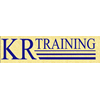Armed Citizen Defensive Carbine Essentials
Basic - Basic rifle marksmanship fundamentals
Duration: 6 Hours
$175.00
Fee
| Date | Availability | ||||
|---|---|---|---|---|---|
| Register Now | June 14 Saturday |
LINCOLN, TX
|
3 - 12 Students | 9a-3p | Douglas Greig |
Description
The "Armed Citizen Defensive Carbine Essentials" course is designed for individuals who want to transition from basic target shooting to using a rifle effectively for personal and home defense. The course bridges the gap between static range experience and the dynamic skills required in real-world defensive scenarios.
Students will learn essential defensive rifle techniques, starting with the proper mindset and equipment selection. The course progresses through various ready positions, snapshooting techniques, and movement strategies crucial for home defense. Participants will also gain an understanding of cover and concealment, as well as the importance of situational awareness through scan and assess drills.
Throughout the course, emphasis is placed on safety, legal considerations, and ethical decision-making in defensive situations. By the end of the four-hour class, students will have a solid foundation in defensive rifle techniques and a clear path for further skill development.
This course is ideal for responsible gun owners looking to enhance their ability to protect themselves and their loved ones in a home defense scenario. No prior defensive shooting experience is required, but basic rifle handling skills and safety knowledge are prerequisites.

Topics Covered
# 1. Mindset – Discussion on mindset when it comes to Home Defense
- Understanding the mental preparation required for home defense scenarios
- Developing situational awareness and threat assessment skills
- Exploring the legal and ethical considerations of using a rifle for self-defense
- Stress management techniques during high-pressure situations
# 2. Equipment – Suggestions for setting up your rifle for home defense
- Choosing the right rifle for home defense (considerations of caliber, size, and maneuverability)
- Essential accessories: optics, lights, and slings
- Ammunition selection for home defense scenarios
- Proper storage and quick-access solutions for home defense rifles
# 3. Ready Positions – low, high, compressed and SUL
- Detailed explanation and demonstration of each ready position
- When and why to use each position
- Transitioning between ready positions
- Adapting ready positions to different environments (hallways, stairs, doorways)
# 4. Snapshooting
- Techniques for quick target acquisition and engagement
- Developing muscle memory for faster response times
- Balancing speed and accuracy in close-quarters situations
- Drills to improve snapshooting skills
# 5. Movement Techniques – getting off the X, pivots and turns
- Importance of mobility in defensive situations
- Techniques for moving while maintaining situational awareness
- Executing pivots and turns while keeping the rifle ready
- Coordinating movement with other household members
# 6. Cover vs Concealment
- Understanding the difference between cover and concealment
- Identifying and utilizing available cover in a home environment
- Shooting from behind cover: techniques and considerations
- Using concealment effectively when cover is not available
# 7. Scan and Assess
- Developing a systematic approach to scanning the environment
- Assessing potential threats and non-threats
- Maintaining awareness after engaging a target
- Communication techniques during scan and assess
# 8. Skills Evaluation
- Practical exercises combining all learned techniques
- Assessment of individual strengths and areas for improvement
- Guidance for continued skill development and practice

Expectations and Outcomes
see course outline for topics

Types
Basic, Intermediate, Rifle

Documentation Requirements
none

Requirements
- Rifle
- Semi-automatic rifle (AR-15 style recommended for commonality, but other platforms are acceptable)
- Preferably chambered in .223/5.56mm for manageable recoil and effectiveness
- Ammunition
- At least 200 rounds of practice ammunition
- Magazines
- Minimum of 2 magazines
- Magazine pouches or method of carrying spare magazines
- Sling
- Two-point adjustable tactical sling
- Optic/Sights
- Red dot sight or low-power variable optic (1-4x or 1-6x)
- Back-up iron sights (BUIS)
- Eye and Ear Protection
- Wraparound ballistic-rated safety glasses
- Electronic earmuffs or earplugs (to allow for clear communication during instruction)
- Personal Protective Equipment (optional)
- Knee pads
- Elbow pads
- Gloves
- Clothing and Footwear
- Comfortable, weather-appropriate clothing that allows for full range of motion
- Sturdy, closed-toe shoes or boots
- Hydration and Sustenance
- Water bottle or hydration system
- Snacks for maintaining energy during long training sessions
- Notepad and Pen
- For taking notes during classroom portions
Optional but Recommended:
- Small tool kit for rifle adjustments
- Hat or cap for sun protection
- Sunscreen and bug spray
Note: Ensure all firearms and accessories comply with local laws and regulations.





